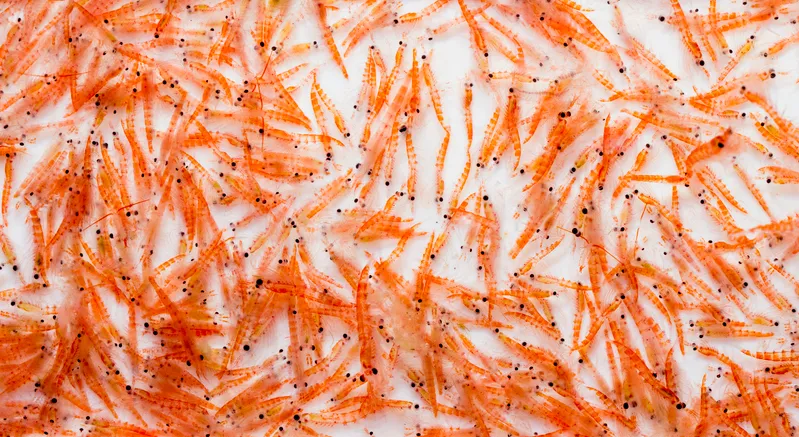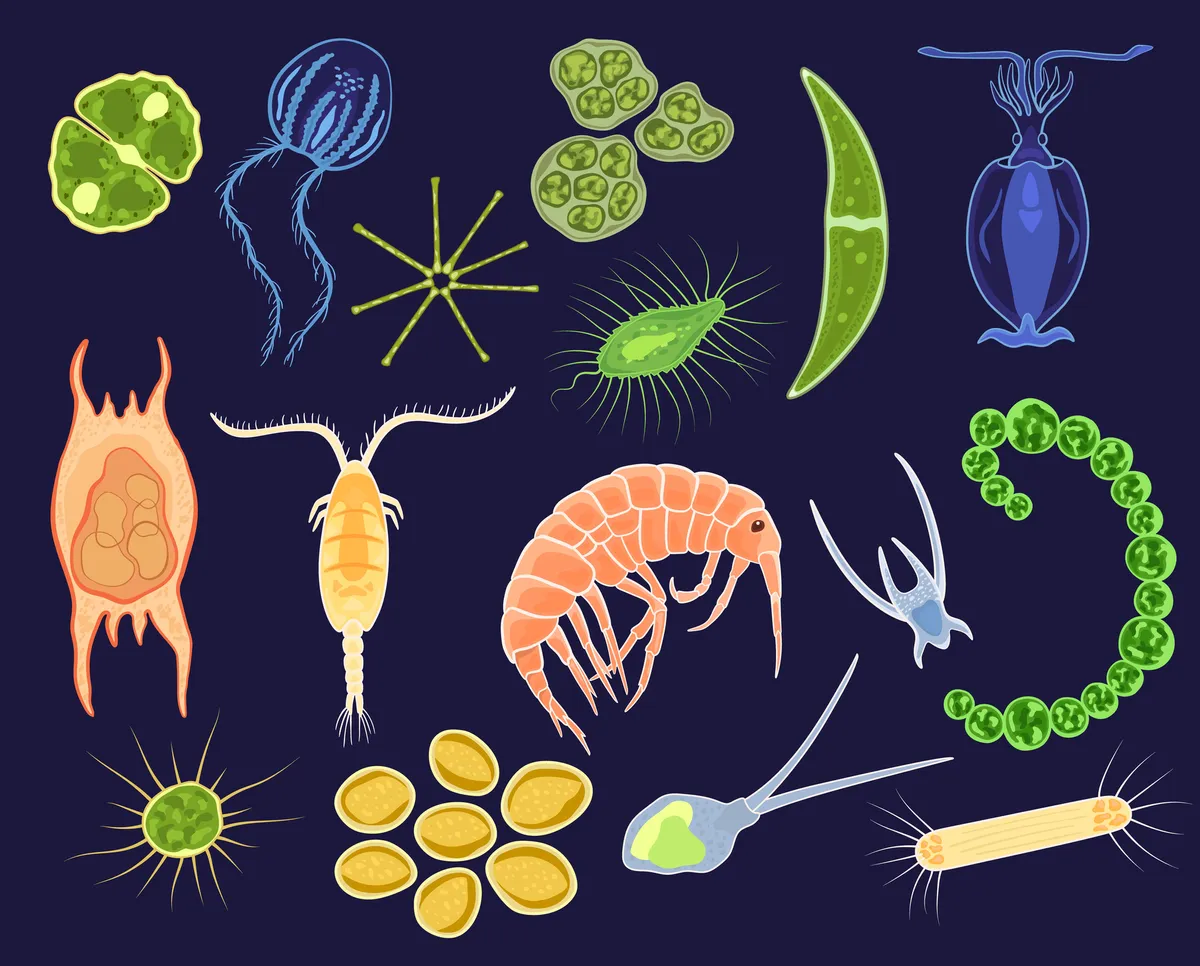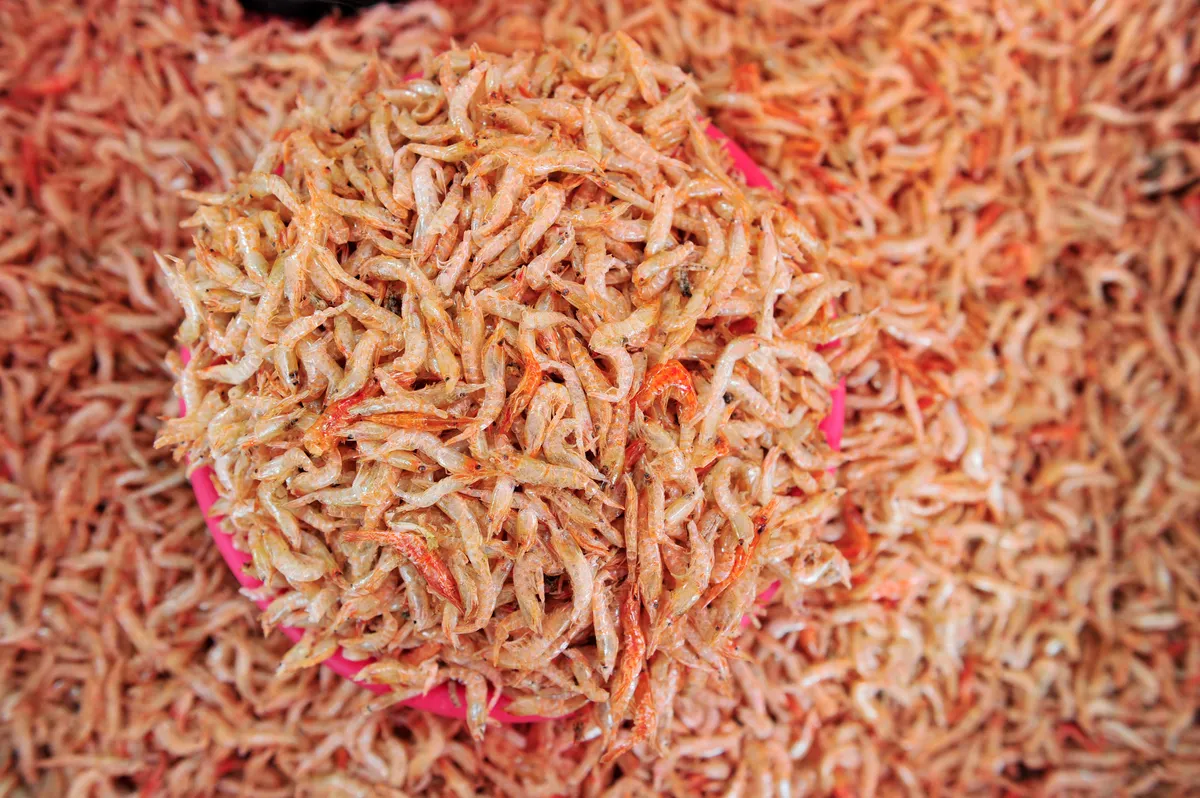1
What are krill?
Krill is the common name for any member of the crustacean order Euphausiacea. They are in the same class of animal as crabs, lobsters and crayfish, as well as shrimp and woodlice. 82 species of krill have been described.
They grow up to about 6cm in length and can live for up to 5 years. Krill are pelagic, i.e. live in the open sea, and congregate in dense swarms of more than 10,000 individuals per cubic meters of water.

2
Are krill the same as plankton?
Krill are plankton but not all plankton are krill! Plankton just means any small freshwater or marine organism that due to its size, immobility, or weakness cannot swim against the current, and exists in a state of drift.
Plankton can be classified into two groups based on how it feeds. Phytoplankton are autotrophic or ‘self-feeding’, making their own food by photosynthesis or chemosynthesis. These plankton include algae and bacteria. Zooplankton are heterotrophic, meaning that they need to consume other organisms to gain energy. These include small animals and some single-celled organisms.
Krill are amongst the largest and most ecologically important zooplankton and they feed on phytoplankton.

3
What eats krill?
Krill means ‘whale food’ in Norwegian.
Krill are the main prey of many penguin, whale, and fish species. This includes the largest animal known to have ever lived on earth, the blue whale! Blue whales feed almost exclusively on krill and need to eat a huge number to sustain them, about 4 tons of the tiny crustaceans a day. That’s about the weight of a fully-grown hippopotamus.

As well as by Antarctic animals, krill are also eaten by humans. Due to its high abundance and nutritive qualities (they are rich in protein, vitamin A, and omega-3 fatty acids), krill are increasingly harvested for human consumption.
The total global harvest of krill from all fisheries is about 150–200,000 tonnes a year, though only a small percentage of this is for human consumption. The majority is utilised as aquaculture feed and bait, and livestock and pet food. Krill also have important medical uses, as their enzymes are used in various treatments.

4
Why are krill so important?
Krill are so important due to the place they occupy in the global food chain. Though small, as the major diet for so many marine animals, they constitute a giant-sized link in the chain and essentially support the Antarctic ecosystem. Declines in krill populations have far reaching effects.
There are also just so many of them! They make up large percentage of the ocean’s biomass, with the biomass of just one Southern Ocean species, Euphausia superba, estimated at 379,000,000 tonnes. That constitutes a vast amount of food and makes them amongst the species with the highest total biomass.
As they feed on phytoplankton, they also play an important role in converting these primary producers into a food source for those higher up on the food chain that can’t eat such small organisms.
Because many species of krill exhibit ‘vertical migrations’ wherein they travel to the ocean’s surface during the day to feed and back down to the depths at night, they provide food for both surface and deeper-sea predators. This makes them an important food source throughout the ocean ecosystem.
Main image: Krill. © Peter Johnson/Corbis/VCG/Getty
